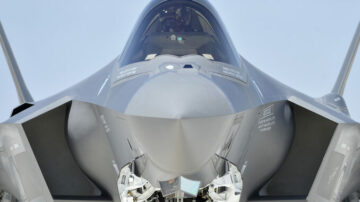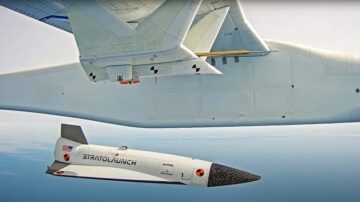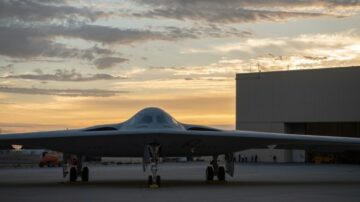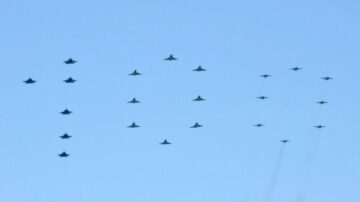
With the acquisition of their first anti-radiation weapon, both countries are improving their capability to perform Suppression/Destruction of Enemy Air Defense missions.
The U.S. State Department has approved the possible Foreign Military Sale to the Netherlands and Poland of the new AGM-88G AARGM-ER (Advanced Anti-Radiation Guided Missile – Extended Range). Both countries, despite being F-16 operators, had never acquired the AGM-88 High-speed Anti-Radiation Missile. However, this changed with the introduction of the F-35A Lightning II, which prioritizes the Suppression/Destruction of Enemy Air Defenses as one of its primary missions.
The Defense Security Cooperation Agency notified the Congress about the two possible FMS programs on April 24, with contracts worth $700 million for the Netherlands and $1.275 billion for Poland. The Netherlands and Poland will get 265 AGM-88G missiles and 360 missiles, respectively, with each receiving also with eight space guidance sections and eight spare control sections.
Also included in each contract are Dummy Air Training Missiles (DATM), missile containers, software, training, support equipment, spare and repair parts, embedded GPS receiver, M-Code, publications and technical documentation, transportation, U.S. Government and contractor engineering, technical and logistical support services and other related elements of logistics and program support.
The DSCA notice mentions that the proposed sales will improve the Netherlands’ and Poland’s capabilities to meet current and future threats by suppressing and destroying land or sea-land based radar emitters associated with enemy air defenses. This capability denies the adversary the use of its air defense systems, thereby improving the survivability of the allied tactical aircraft.
The FMS of the AARGM-ER to the Netherlands and Poland follow the ones to Australia and Finland last year, with requested 63 and 150 missiles, respectively. While the Netherlands, Poland and Finland would only employ the AGM-88G on the F-35A, Australia can also employ the new missile on its F/A-18F Super Hornets and EA-18G Growlers.

The AGM-88G Advanced Anti-Radiation Guided Missile – Extended Range
The AARGM-ER is the evolution of the latest variant of the AGM-88 HARM (High-Speed Anti-Radiation Missile), the AGM-88E AARGM, a medium-range air-to-ground missile employed for Suppression and/or Destruction of Enemy Air Defenses (SEAD/DEAD). The AGM-88E is the result of a cooperative program with the Italian Air Force started in 2005 and developed as an upgrade and compliment to the AGM-88B/C. The AARGM program designed and produced a new Guidance Section and modified the existing Control Section, which are coupled with the legacy HARM Rocket Motor and Warhead Section, wings and fins.
The new Guidance Section features a passive anti-radiation homing receiver, satellite and inertial navigation system and a millimeter wave radar for terminal guidance, with the added ability to send images of the target via a satellite link before impact. The purpose of these new Guidance Section is to improve the effectiveness of the legacy HARM, especially against enemy radar and communications sites that would shut down to confuse incoming anti-radiation missiles (counter-shutdown capability) or pop-up threats.
As stated by the U.S. Navy, AARGM baseline capabilities include an expanded target set, counter-shutdown capability, advanced signals processing for improved detection and locating, geographic specificity providing aircrew the opportunity to define missile-impact zones and impact-avoidance zones, and a weapon impact-assessment broadcast capability providing for battle damage assessment cueing.
The AARGM-ER builds up on these capabilities to obtain an even more advanced weapon that is being integrated on the F/A-18E/F Super Hornet and EA-18G Growler and it is compatible for a future integration on all the variants of the F-35 Lightning II. The AARGM-ER combines the Guidance Section and Control Section of the AGM-88E with a new, larger rocket motor and a new warhead. The control surfaces have been redesigned too, obtaining aerodynamic strakes along the sides for increased lift and low-drag tail surfaces. The missile will reportedly have roughly double the range and speed of the AGM-88E.
One of the factors behind the AGM-88G design was the need for the missile to fit inside the F-35’s weapons bays, as the previous versions of the AGM-88 can’t fit because of their large control fins. So, until the missile is ready for fielding, the F-35’s SEAD capability is mostly reliant on its AESA (Active Electronically Scanned Array) radar with sophisticated electronic attack capabilities, including false targets, network attack, advanced jamming and algorithm-packed data streams.
- SEO Powered Content & PR Distribution. Get Amplified Today.
- PlatoData.Network Vertical Generative Ai. Empower Yourself. Access Here.
- PlatoAiStream. Web3 Intelligence. Knowledge Amplified. Access Here.
- PlatoESG. Carbon, CleanTech, Energy, Environment, Solar, Waste Management. Access Here.
- PlatoHealth. Biotech and Clinical Trials Intelligence. Access Here.
- Source: https://theaviationist.com/2024/04/29/netherlands-and-poland-aargm-er/?utm_source=rss&utm_medium=rss&utm_campaign=netherlands-and-poland-aargm-er
- :has
- :is
- $UP
- 1
- 125
- 150
- 2005
- 24
- 360
- a
- ability
- About
- Achieve
- acquired
- acquisition
- active
- added
- advanced
- adversary
- Aerospace
- aerospace engineering
- against
- agency
- AIR
- aircraft
- All
- along
- also
- among
- an
- and
- applied
- approved
- April
- ARE
- areas
- Array
- AS
- assessment
- associated
- attack
- Australia
- avatar
- based
- Baseline
- Battle
- because
- been
- before
- behind
- being
- Billion
- both
- broadcast
- builds
- by
- CAN
- capabilities
- capability
- changed
- combines
- Communications
- compatible
- conflicts
- Congress
- Containers
- contract
- Contractor
- contracts
- contributor
- control
- cooperation
- cooperative
- countries
- coupled
- Current
- damage
- data
- Defense
- defenses
- define
- Degree
- Department
- Design
- designed
- Despite
- Detection
- developed
- documentation
- double
- down
- dummy
- during
- each
- effectiveness
- eight
- Electronic
- electronically
- elements
- embedded
- employed
- Engineering
- equipment
- especially
- Even
- evolution
- existing
- expanded
- expertise
- extended
- factors
- false
- Features
- Finland
- FINS
- First
- fit
- flight
- follow
- For
- foreign
- freelance
- future
- geographic
- get
- Government
- gps
- graduate
- guidance
- guided
- had
- harm
- Have
- he
- his
- However
- HTTPS
- ii
- images
- Impact
- improve
- improved
- improving
- in
- include
- included
- Including
- Incoming
- increased
- inside
- integrated
- integration
- Introduction
- IT
- Italian
- Italy
- ITS
- journalist
- jpg
- Land
- large
- larger
- Last
- Last Year
- latest
- launches
- Legacy
- lightning
- LINK
- locating
- logistics
- master
- max-width
- Meet
- mentions
- Military
- million
- missiles
- missions
- modified
- more
- mostly
- Motor
- Navigation
- Need
- Netherlands
- network
- never
- New
- Notice..
- obtain
- obtaining
- of
- on
- ONE
- ones
- only
- Operations
- operators
- Opportunity
- or
- osint
- Other
- parts
- passive
- perform
- photo
- plato
- Plato Data Intelligence
- PlatoData
- Poland
- pop-up
- possible
- previous
- primary
- prioritizes
- processing
- Produced
- Program
- Programs
- proposed
- providing
- publications
- purpose
- radar
- range
- ready
- receiving
- related
- repair
- reportedly
- requested
- result
- rocket
- roughly
- s
- sale
- sales
- satellite
- Section
- sections
- security
- send
- Services
- set
- shut
- Shut down
- Sides
- signals
- Sites
- So
- Software
- sophisticated
- Space
- specificity
- speed
- started
- State
- State Department
- stated
- streams
- Studying
- Super
- support
- suppressing
- suppression
- system
- Systems
- tactical
- Target
- targets
- Technical
- techniques
- Terminal
- test
- that
- The
- the Netherlands
- the world
- their
- thereby
- These
- this
- threats
- to
- too
- Training
- transportation
- two
- u.s.
- U.S. government
- U.S. Navy
- until
- upgrade
- use
- Variant
- variants
- versions
- via
- was
- Wave
- Weapons
- which
- while
- will
- wings
- with
- world
- worth
- would
- year
- zephyrnet
- zones










